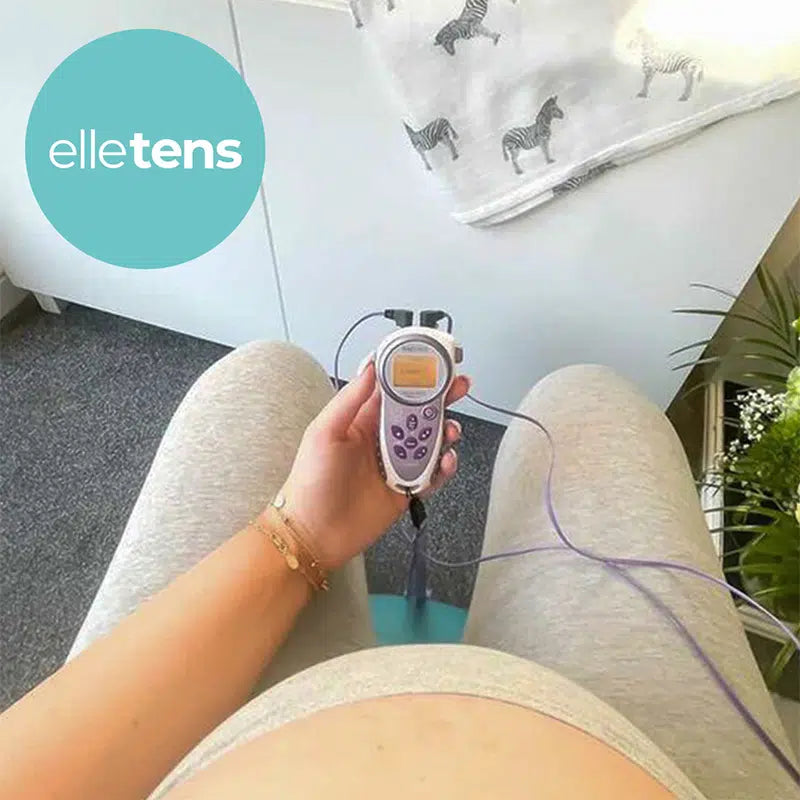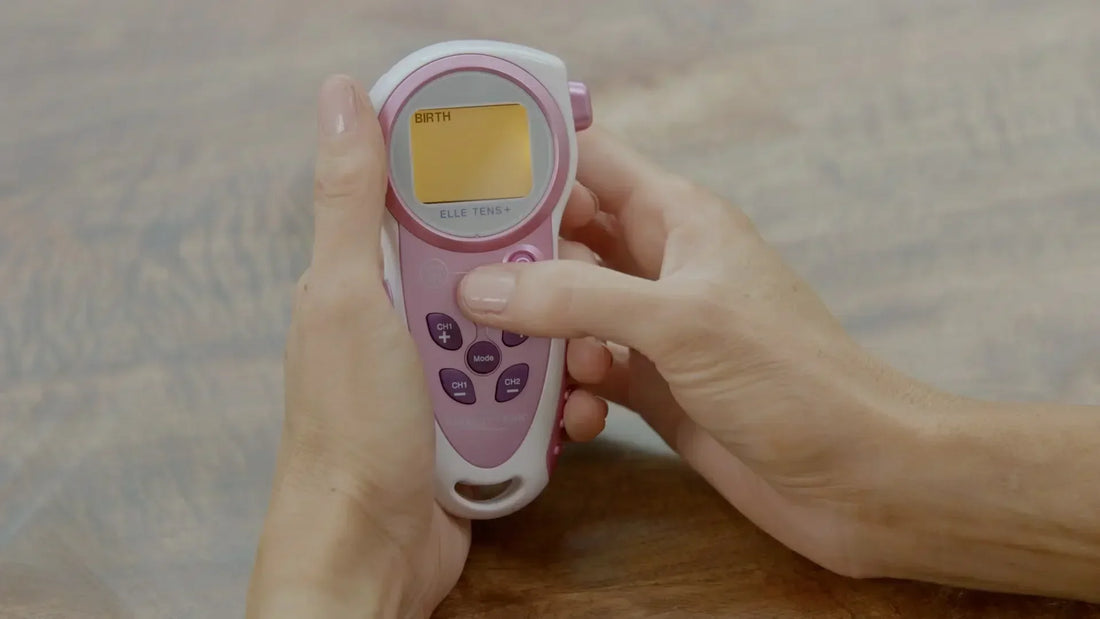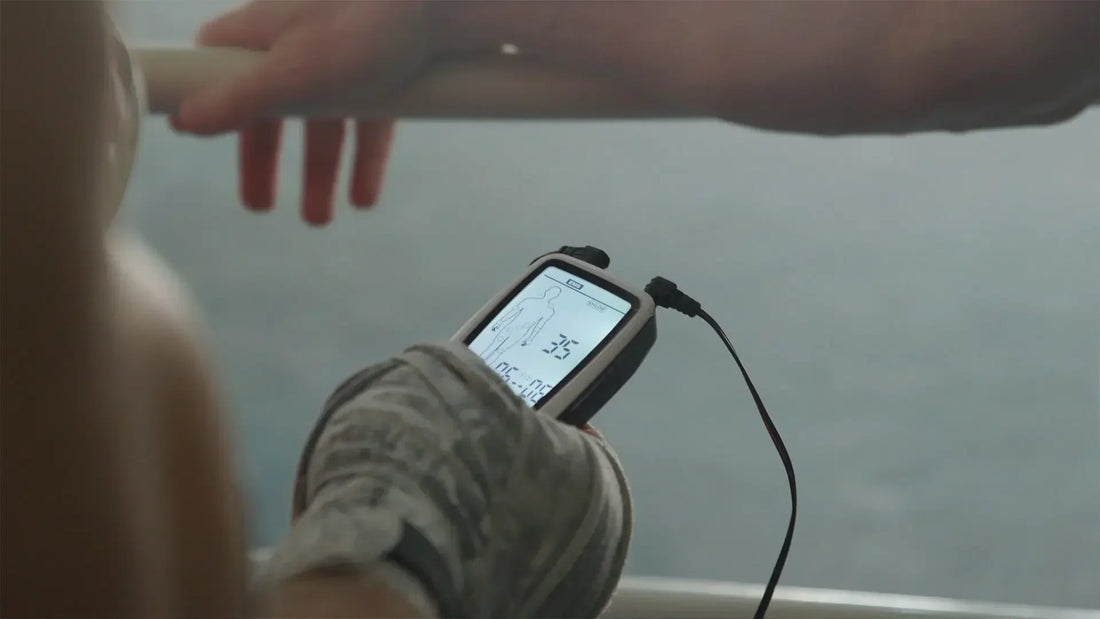Learn
Compare the Elle TENS 2 vs Elle TENS Plus for Hire: Which is Right for Your Labour TENS Hire
As the authorised distributor of Elle TENS in Australia, we’re often asked about the differences between the Elle TENS Plus and the Elle TENS 2, particularly when it comes to your Labour TENS Hire. Let’s break it down for you: Elle TENS 2: Our Recommended Rental Choice The Elle TENS 2 is our go-to recommendation for mums-to-be looking to rent a TENS machine for labour pain relief. Here’s why: Specifically designed for labour pain management Easy to use with pre-set modes and a boost button for contractions Compact and portable Cost-effective rental option Elle TENS Plus: Great for Purchase, Not Ideal for Rental While the Elle TENS Plus is an excellent device, we don’t typically recommend it for rentals. Here’s why: The main difference is the post-birth incontinence management feature This feature requires a vaginal probe, which shouldn’t be used until about 12 weeks post-birth, given that a standard rental is between 6-8 weeks, its For short-term rentals focused on labour, this additional feature isn’t necessary Why We Recommend Elle TENS 2 for Rentals Focused functionality: The Elle TENS 2 provides everything you need for labour pain relief without extra features you can’t use immediately. Cost-effective: Why pay for features you won’t be using during your rental period? Simplicity: The Elle TENS 2 is straightforward to use, perfect for when you’re focused on labour. Your Safety is Our Priority Caution: At Elle TENS we only use genuine BabyCare TENS Electrodes. These have undergone medical testing and approval in both the UK and Australia, ensuring the safety of you and your baby. Please be aware of providers who may use inferior Electrodes. If you are unsure, please don’t hesitate to reach out if you have any questions. Your safety and satisfaction are our top priorities. While using inferior electrodes may void your device’s warranty, our primary concern is your well-being. We believe that your health and comfort during this important time are too precious to compromise with lower-quality products. That’s why we always recommend using approved, high-quality electrodes for the best and safest experience. Conclusion Whether you choose to rent the Elle TENS 2 or purchase the Elle TENS Plus for long-term use, you’re getting a high-quality, safe, and effective device for pain management. Remember, always consult with your healthcare provider before using any pain management techniques during pregnancy and labour. Ready to experience the benefits of TENS for your labour? Visit www.elletens.com.au to purchase or hire your Elle TENS device today!
Learn moreHow Does a TENS Machine Work?
TENS is Transcutaneous Electrical Nerve stimulation or TENS for short. It is an effective method of pain relief involving the use of a mild electrical current. Users attach Electrode pads to the affected part of the body and then switch on the TENS Machine. The TENS Machine passes small electrical impulses to the affected area of your body, this is where the user feels a tingling sensation similar to pins and needles. These tingling sensations which are the electrical impulses reduce the pain signals going to the body’s spinal cord and brain, which help to relieve pain and relax muscles. They also stimulate the production of endorphins, which are the body’s natural painkillers. What is TENS? Transcutaneous electrical nerve stimulation or TENS for short is an effective method of pain relief involving the use of a mild electrical current. Users attach Electrode pads to the affected part of the body and then switch on the TENS Machine. The TENS Machine passes small electrical impulses to the affected area of your body, this is where the user feels a tingling sensation similar to pins and needles. These tingling sensations which are the electrical impulses reduce the pain signals going to the body’s spinal cord and brain, which help to relieve pain and relax muscles. They also stimulate the production of endorphins, which are the body’s natural painkillers. What TENS is used for? TENS can be used to help reduce pain and muscle spasms caused by a wide range of conditions including: arthritis period pain knee pain neck pain back pain sports injuries It is also used as a method of pain relief during labour. “One in 5 Australians aged 45 and over are living with persistent, ongoing pain.” Trying TENS If you’re thinking about trying TENS, it’s a good idea to speak to your GP about a referral to a physiotherapist. TENS machines are available for purchase or hire. If you have Private Health Insurance you may be eligible for a rebate on your purchase – just check with your provider. How to use TENS The information below is a general guide on how to use a TENS machine. You should always follow the manufacturer’s specific instructions. TENS machines are small and lightweight, so you can use them while you’re working or on the move. You can put it in your pocket, clip it to your belt, attach it to a lanyard or hold it in your hand. You can use TENS throughout the day for as long as you like, although it shouldn’t be used while you’re driving, operating machinery, or in the bath or shower. Positioning the pads Make sure the machine is switched off before you attach the pads to your skin. Position the pads on either side of the painful area, at least 2.5cm (1 inch) apart. Never place the pads over: the front or sides of your neck your temples your mouth or eyes your chest and upper back at the same time irritated, infected or broken skin varicose veins numb areas Turning it on and adjusting the strength Turn on the TENS machine when the pads are attached in the correct places. You’ll feel a slight tingling sensation pass through your skin.The machine allows you to control the strength of the electrical impulses by simply using the arrow buttons. Start on a low setting and gradually increase it until the sensation feels strong but comfortable. If the tingling sensation starts to feel painful or uncomfortable, reduce it slightly. Switch the TENS machine off after you’ve finished using it and remove the electrodes from your skin. With reusable electrodes, place them back on the paper backing they came on to preserve the stickiness! Are there any risks of side effects? For most people, TENS is a safe treatment with no side effects. Some people may be allergic to the pads and their skin may become red and irritated, but special pads for people with allergies are available. TENS isn’t safe for everyone to use. Don’t use it without first seeking medical advice if: you have a pacemaker or another type of electrical or metal implant in your body you’re pregnant, or there’s a chance you might be pregnant – TENS may not be recommended early in pregnancy. (TENS machines are suitable during labour) you have epilepsy or a heart problem
Learn moreHow do Electrical Muscle Stimulation (EMS) Machines work?
Electrical Muscle Stimulation (EMS) is a technique to stimulate muscles with an electric current to achieve a specific result. This result is often to relive inflammation after injury and to build strength during rehabilitation after injury or surgery. How does EMS differ from TENS? The easiest way to tell the difference between TENS (Transcutaneous Electrical Nerve Stimulation) and EMS is that TENS targets nerves to reduce pain, whereas EMS targets muscles to aid recovery. TENS machines act to block pain signals reaching the brain and release endorphins to make you feel good. EMS machines on the other hand target specific muscles to reduce inflammation and force these muscles to fire when an injury may prevent you from using these muscles naturally. By keeping these muscles engaged they will not lose strength (atrophy) so you can return to normal activity and performance sooner. Key Benefits of an EMS Machine An EMS machine has many benefits to your muscles. It can: Relax the muscle Minimise muscle inflammation Prevent atrophy of the muscle Speed up muscle healing Stimulate muscle growth “EMS is the fastest growing area of the fitness industry” EMS or TENS machines what do I need? TENS machines are used to relieve chronic nerve, muscle or joint pain including inflammatory arthritis, back pain, foot pain, contractions during childbirth, or post-operative pain. A migraine can also be relieved by specialised TENS machines. EMS machines, on the other hand, are used to relax or strengthen the muscles, for example in cases of muscular spasm, poor blood circulation (particularly in the back and nape of the neck), muscle atrophy after an illness or as part of rehabilitation from an injury. They are therefore more often recommended for the relief of muscle pain. Athletes also sometimes use EMS in order to recover from an injury more quickly, as electrical muscle stimulation will enable them to rebuild muscle without too much strain and to exercise muscles that they may not use very much. 3-in-1 Combo TENS, EMS & Massage The elletens 3-in-1 Combo device offers both TENS and EMS in one single unit along with a relaxing massage function. If you suffer from ongoing pain and also need to help with rehabilitation from a recent injury (or are injury prone) this device could be a great addition to your pain relief and rehabilitation program. Our devices with EMS capability Strengthen, tone and repair for complete rehabilitation.
Learn moreUsing a TENS Machine for Incontinence
Incontinence – what is this big bad scary word? Whether you are male or female at some stage in your life you or your loved one will be touched by incontinence in some form. Incontinence is a term that describes any accidental or involuntary loss of urine from the bladder (urinary incontinence) or bowel motion, faeces or wind from the bowel (faecal or bowel incontinence). Don’t suffer in silence Urge, Stress and Mixed Incontinence affects over 4.8 Million Aussies, that is nearly one-quarter of our population! While there are variations and levels of Incontinence, many are in fact reversible. Incontinence be it Bladder or Bowel is still largely a ‘suffer in silence’ condition due to social stigma. We at Elle TENS Australia want to help change that! TENS Machine vs Adult Diapers You see so much promotion of adult diapers and continence underwear for managing forms of incontinence. While these are needed for severe conditions, we believe (and it is clinical proven) that in many cases the pelvic floor (which are a big set of muscles) can be reconditioned, retrained and strengthened so individuals can regain full control of bladder and bowel and be in control again. “1 in 4 adult Australian’s suffer from some forms of incontinence.” Incontinence Causes Continence issues can occur for various reasons in both women and men. For women it can start from pregnancy and also occur during menopause, for men it can be related to prostrate issues for example. Take control of your Pelvic Floor Always consult your Health Care provider before using any medical devices to ensure the product is appropriate for your individual circumstances. Private Health Cover can some if not all of the cost of of a Pelvic Floor Stimulator device. Contact your Health Care provider to see how much you can claim back. Depending on your form of Incontinence you may be eligible for funding from: Continence Aids Payment Scheme Funding (CAPS) National Disability Insurance Scheme (NDIS) DVA Gold or DVA White Card.
Learn morePelvic Floor – What Mums Need to Know
Great interview with a Womens Health Physiotherapist with Newbornbaby.com.au regarding Pelvic Floor. No woman will get through her pregnancy without hearing these two little words, and the confusion which often surrounds them can be enough to trigger a minor panic attack. Most of us know it has something to do with bladder control but beyond that, its significance to our bodies and our lives can be vague. Yet it’s extremely important. And the impact on our pelvic floor by pregnancy and birth is something we can work to minimise from conception. To make things a little clearer, we spoke with Women’s Health Physiotherapist and Director of BeActive Physiotherapy, Shira Kramer. What is the Pelvic Floor? The pelvic floor is the base of a group of muscles referred to as the ‘core’. These muscles are located in the pelvis and attach to the pubic bone and the front and tail-bone (coccyx) and the back. “The pelvic floor muscles work together with the deep abdominal muscles and deep back muscles to support the spine,” says Dr Kramer. “They also help to control the pressure inside the abdominal cavity and assist in supporting the bladder, bowel and uterus in women. “In addition they help maintain bladder and bowel control and play an important role in sexual sensation and function.” How does pregnancy and birth effect the Pelvic Floor? In pregnancy the hormone ‘relaxin’ is released throughout the body and softens the tissues to accommodate for the growing baby. “This softening effect of relaxing along the increased weight of the baby (and body weight) places pressure on the pelvic floor muscles,” says Dr Kramer. The pelvic floor muscles and ligaments are stretched during childbirth to allow delivery of the baby from the pelvic outlet. Will the outcome be the same for everyone? According to Dr Kramer, there are a number of risk factors that contribute to pelvic floor dysfunction. These include: multiple births instrumental births (using forceps or ventouse) long second stage of labour severe perineal tearing, or large babies Can we help to prevent or minimise Pelvic Floor issues? “Absolutely!” says Dr Kramer. Pelvic floor muscle exercises are an effective way to maintain pelvic floor strength during and after pregnancy. “Good pelvic floor muscle tone enables women to maintain bladder and bowel control through pregnancy and into motherhood”. “They also help reduce the risk of developing prolapse during and after pregnancy and assist with recovery after birth.” What can we expect following birth? Childbirth is essentially a trauma to the pelvic floor muscle. Like any soft tissue injury there may be pain, swelling and inflammation. The pelvic floor muscles take time to get back to their usual state after birth. The effects of the hormone relaxin can last up to 6 months after birth and pelvic floor care post delivery is crucial in the recovery process. Dr Kramer recommends a regime of rest, ice, compression and elevation in the first few days following a vaginal delivery. Is it important to have your pelvic floor professionally assessed following birth? “Yes,” says Dr Kramer. Most hospitals have a physiotherapist come and do a postnatal check and give advice on how to care for pelvic floor muscles post delivery. If appropriate they will also teach you how to activate these muscles and give you advice to optimise recovery. Those not assessed in hospital or those requiring follow up should check in to see a local women’s health physiotherapist for assessment and management. How can we determine the level of impact to our pelvic floor? Being aware of what signs and symptoms to look out for is crucial. If in doubt seek a professional opinion. It is recommended to seek professional assessment by a women’s health physiotherapist if any of the symptoms below are experienced: accidentally leaking urine when you exercise, laugh, cough or sneeze frequently needing to go to the toilet finding it difficult to empty your bladder or bowel accidentally losing control of your bladder or bowel accidentally passing wind, or sensation of bulging, dragging or heaviness in pelvic area (prolapse) pain in the pelvic area What exercises/steps should we take to get our pelvic floor back on track? Pelvic floor muscle care should be prioritised in pregnancy and in the postnatal period. “For the first few days following delivery rest, ice and compression are recommended,” says Dr Kramer. “Integrating pelvic floor exercises as guided by health care professional is integral to recovery and optimising function. To perform a basic pelvic floor exercise tighten and lift around your front and back passage as if you are holding on to go to the toilet, and releasing. These can be performed during pregnancy as well. “Make pelvic floor exercise a part of your daily life,” says Dr Kramer. “Tightening your pelvic floor muscles every time you cough, sneeze or lift. “Doing some regular exercise such as walking. “Progressing your exercises by doing them during the day in different positions such as standing, sitting or leaning on your hands and knees.” How do we know if we’re performing the exercises properly? Ideally an assessment by a women’s health physiotherapist is recommended, as they have a variety of assessment tools which may include a gentle digital examination or an assessment with real-time ultrasound. “At home as a one off test to see if you are on the right track try to stop the flow of urine whilst you are on the toilet. If you can stop the flow you are likely on the right track. If there is no change to the flow you are unlikely activating the muscle correctly.” Are there any activities to avoid following birth? “Ease back into exercise and make sure your program is safe for your pelvic floor,” says Dr Kramer. “Avoid high impact exercise such as running and jumping, no lifting unless absolutely necessary and set your pelvic floor muscles before you lift, sneeze or cough. “Also try to avoid constipation, putting on too much weight and repetitive coughing and straining.” How do we know if things are improving? A professional can assess for progress by testing the strength (how hard you can squeeze) of the contraction as well as the endurance of the contraction (how long you can hold it for). For many women, it is important to follow a specific exercise program tailored to their individual needs. If you are unsure of whether you are exercising your pelvic floor muscles correctly or you have urinary problems, you should make an appointment with a women’s health physiotherapist. For those of you who are planning a natural birth and still deciding on a labour TENS for pain relief, consider the Elle TENS+ which is an all in one labour TENS, general/sports TENS and a Pelvic Floor Stimulator – which does the Pelvic Floor exercises for you! Alternatively if you don’t need a labour TENS consider the SensaTONE Pelvic Floor Stimulator. Relevant posts: https://elletens.com.au/incontinence-bladder-control-problems-in-women/ http://newbornbaby.com.au/pelvic-floor/
Learn more




